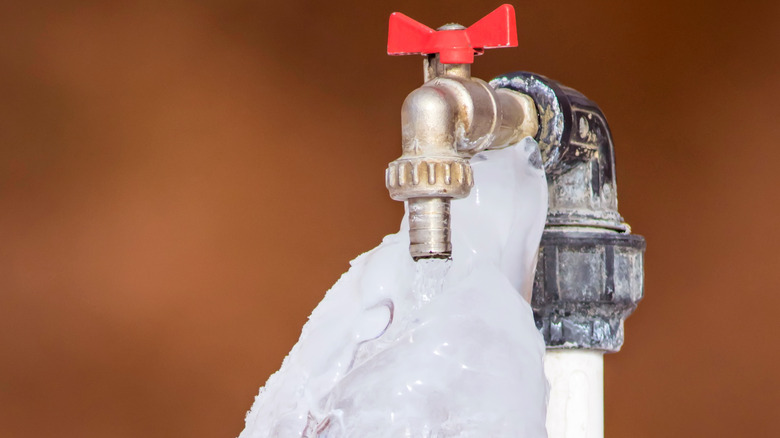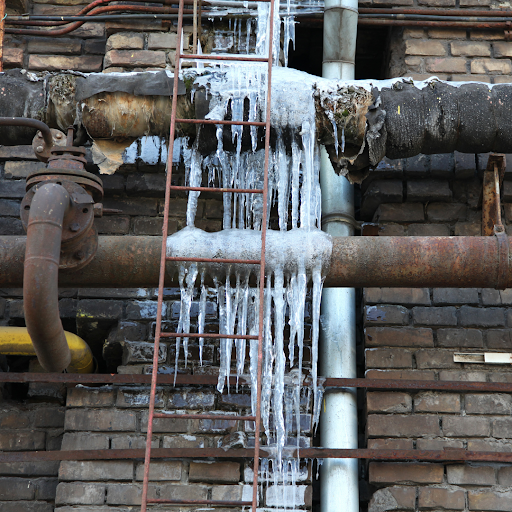Protecting Against Frozen Pipes: Effective Strategies for Cold Weather
Protecting Against Frozen Pipes: Effective Strategies for Cold Weather
Blog Article
This article following next about 6 Ways to Prevent Frozen Pipes is particularly fascinating. You should look it over.

Winter can ruin your pipes, specifically by freezing pipelines. Here's how to prevent it from occurring and what to do if it does.
Introduction
As temperatures drop, the risk of frozen pipes increases, potentially resulting in costly repair work and water damage. Understanding how to avoid frozen pipelines is critical for home owners in cool climates.
Prevention Tips
Shielding at risk pipes
Wrap pipelines in insulation sleeves or utilize heat tape to shield them from freezing temperatures. Concentrate on pipelines in unheated or outside areas of the home.
Home heating techniques
Maintain interior rooms effectively heated, specifically locations with pipes. Open closet doors to enable cozy air to distribute around pipelines under sinks.
How to recognize icy pipes
Search for lowered water flow from taps, uncommon odors or sounds from pipes, and noticeable frost on subjected pipelines.
Long-Term Solutions
Architectural adjustments
Think about rerouting pipes far from outside wall surfaces or unheated areas. Add extra insulation to attics, basements, and crawl spaces.
Upgrading insulation
Purchase top quality insulation for pipes, attics, and walls. Correct insulation aids keep regular temperature levels and lowers the risk of frozen pipes.
Safeguarding Outdoor Plumbing
Yard pipes and outside faucets
Disconnect and drain pipes garden hoses prior to winter months. Set up frost-proof spigots or cover exterior taps with insulated caps.
Understanding Icy Pipes
What creates pipes to freeze?
Pipes ice up when exposed to temperature levels below 32 ° F (0 ° C) for expanded periods. As water inside the pipelines ices up, it broadens, taxing the pipe walls and possibly causing them to rupture.
Threats and problems
Icy pipes can result in water supply disturbances, property damages, and pricey repair work. Burst pipelines can flooding homes and cause substantial architectural damages.
Indications of Frozen Piping
Identifying frozen pipes early can prevent them from bursting.
What to Do If Your Pipes Freeze
Immediate activities to take
If you believe icy pipelines, keep faucets open to relieve stress as the ice thaws. Utilize a hairdryer or towels soaked in hot water to thaw pipelines slowly.
Conclusion
Protecting against icy pipes calls for positive steps and fast reactions. By understanding the reasons, signs, and preventive measures, property owners can shield their plumbing throughout cold weather.
5 Ways to Prevent Frozen Pipes
Drain Outdoor Faucets and Disconnect Hoses
First, close the shut-off valve that controls the flow of water in the pipe to your outdoor faucet. Then, head outside to disconnect and drain your hose and open the outdoor faucet to allow the water to completely drain out of the line. Turn off the faucet when done. Finally, head back to the shut-off valve and drain the remaining water inside the pipe into a bucket or container. Additionally, if you have a home irrigation system, you should consider hiring an expert to clear the system of water each year.
Insulate Pipes
One of the best and most cost-effective methods for preventing frozen water pipes is to wrap your pipes with insulation. This is especially important for areas in your home that aren’t exposed to heat, such as an attic. We suggest using foam sleeves, which can typically be found at your local hardware store.
Keep Heat Running at 65
Your pipes are located inside your walls, and the temperature there is much colder than the rest of the house. To prevent your pipes from freezing, The Insurance Information Institute suggests that you keep your home heated to at least 65 degrees, even when traveling. You may want to invest in smart devices that can keep an eye on the temperature in your home while you’re away.
Leave Water Dripping
Moving water — even a small trickle — can prevent ice from forming inside your pipes. When freezing temps are imminent, start a drip of water from all faucets that serve exposed pipes. Leaving a few faucets running will also help relieve pressure inside the pipes and help prevent a rupture if the water inside freezes.
Open Cupboard Doors
Warm your kitchen and bathroom pipes by opening cupboards and vanities. You should also leave your interior doors ajar to help warm air circulate evenly throughout your home.

I am very curious about 6 Ways to Prevent Frozen Pipes and I am praying you enjoyed reading our post. Loved our post? Please share it. Help someone else locate it. Thanks so much for your time spent reading it.
Click Here Report this page